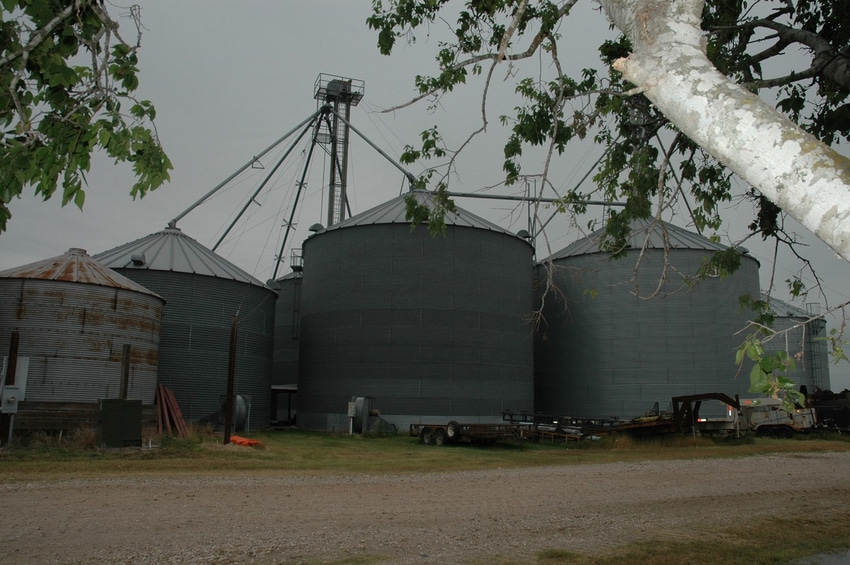
Conducted every five years by the USDA's National Agricultural Statistics Service, the census is a complete count of all U.S. farms, ranches, and those who operate them. USDA-NASS officials say that while every census is important to the industry, the information in this census could prove timely because it falls as work on the 2018 farm bill takes place.

The paperwork for the 2017 Census of Agriculture will arrive in farm and ranch mailboxes later this year, and producers are being encouraged to be vigorously involved in this census as it will be used by lawmakers to help draft the new farm bill next year.
Conducted every five years by the USDA's National Agricultural Statistics Service, the census is a complete count of all U.S. farms, ranches, and those who operate them. USDA-NASS officials say that while every census is important to the industry, the information in this census could prove timely because it falls as work on the 2018 farm bill takes place.
"The Census of Agriculture remains the only source of uniform, comprehensive, and impartial agriculture data for every county in the nation," said NASS Administrator Hubert Hamer. "As such, census results are relied upon heavily by those who serve farmers and rural communities, including federal, state and local governments, agribusinesses, trade associations, Extension educators, researchers, and farmers and ranchers themselves."
Important information provided by farmers and ranchers are designed to paint a precise and timely picture of the state of agriculture that offers law and policy makers the information they need when considering and drafting rules and legislation to support the industry, including land use and ownership, operator characteristics, production practices, income and expenditures, and other topics.
The 2012 census revealed that more than 3 million farmers operated more than 2 million farms nationwide, spanning more than 914 million acres. This represented a 4 percent decrease in the number of U.S. farms from the previous census in 2007. However, agriculture sales, income, and expenses increased between 2007 and 2012. This telling information and thousands of other agriculture statistics were a direct result of responses to the Census of Agriculture.
NASS says producers who are new to farming or did not receive a Census of Agriculture in 2012 still have time to sign up to receive the 2017 Census of Agriculture report form by visiting www.agcensus.usda.gov and clicking on the “Make Sure You Are Counted” button through June. NASS defines a farm as any place from which $1,000 or more of agricultural products were produced and sold, or normally would have been sold, during the census year.
IMPORTANCE OF THE CENSUS OF AGRICULTURE
According to NASS, statistical needs for agricultural planning and policy-making are very broad. The primary needs are for current agricultural statistics produced on a regular basis, such as crop and livestock production. Most countries have established an ongoing system for the collection of these types of data. But globally, agricultural statistics are usually collected through administrative reporting systems and/or through sample surveys. A better system of collecting data is needed to monitor current agricultural and food supply conditions and to provide information to help governments and others in short-term decision-making. USDA-NASS believes farmer participation is the better method.
USDA-NASS officials believe a five-year Census of Agriculture provides fundamental data on the organizational structure of agricultural holdings, such as farm size, land use, land tenure, livestock numbers, and the use of machinery, as well as the number of holdings with each crop and livestock type, and does so efficiently by relying on producers to provide the raw data.
NASS emphasizes the importance of a census that involves producers versus a census that is administratively collected and compiled by government officials. By utilizing producer input to compile agricultural data, the administrative costs of a census is reduced which provides more budget funds to funnel down to programs that benefit the industry.
Another advantage for a comprehensive and accurate census is that it provides substantial monitoring of development goals established in the United Nations Millennium Declaration of 2000. The United States was one of numerous countries that committed to sustainable economic growth. The Declaration called for combating poverty, hunger, disease, illiteracy, environmental degradation and discrimination against women. To help track progress in meeting the commitments of the Declaration, a set of time-bound and measurable Millennium Development Goals (MDGs) was developed, and an accurate census helps provide the information required to evaluate and report progress toward that goal.
FOOD SECURITY ANALYSIS
Concerning food availability, data from the agricultural census helps in understanding the structure
of the food production industry and the constraints faced by farmers in increasing agricultural production, as well as suggesting strategies for increasing agricultural productivity. Cropping patterns can be studied, along with information on the use of irrigation, farm machinery and improved varieties to help develop programs for increasing food production.
The agricultural census also addresses food access issues. A new element in the World Food Summit of 2010, the collection of community-level data, can be especially useful. For example, data on the presence of agricultural produce markets and other infrastructure in the community can help assess the effectiveness of the national food distribution system.
The agricultural census also provides broad economic, social and environmental indicators to show the background against which the food economy operates. The agricultural census can help in studies of environmental issues that may affect agricultural output, such as forest cover, and the use of fertilizers and pesticides. Household data from the agricultural census may also highlight social issues affecting food security, such as changes in demographic patterns and household structures.
NASS says these are only a few of the reasons a comprehensive and accurate census is important. They encourage producers to participate in this year's census that will aid in developing not only the new farm bill but also will provide accurate reporting of information that can prove beneficial in the years ahead.
About the Author(s)
You May Also Like





